10 Of The (Lesser Known) Smartest Dog Breeds
You've heard of Border Collies, Poodles & Labradors - but here are a couple of other, lesser-known of the smartest dog breeds out there & how you can prevent them from getting up to mischief.

You’ve heard of Border Collies, Golden Labs, and Poodles as being part of the family of the smartest dog breeds in the world. But what about the rest? Turns out, some of the smartest dogs come from breeds you might not have come across before.
So let’s dive right in to some of the (lesser known) of the smartest dog breeds – and what to keep in mind if you’re looking for a brainy buddy that’s also a good fit for you.

Find out how your dog spends their time.
Read moreThe world’s smartest dogs: What to watch out for
Now you might think adopting one of these breeds means a lifetime of new tricks, unquestioning obedience, and a bunch of thoroughly impressed friends and family members. But it might not be as easy as it seems!
Because as it turns out, when you’re hanging out with these smart dog breeds, you also have to keep in mind that they need:
Training & more training
When it comes to keeping your dogs safe, regular training can be a lifesaver. But especially so when you’ve got a smart dog breed at home. (That can figure out every loophole and play every dirty trick in the book to circumvent the “rules.”)
Of course, regular training is a must-have for all dogs – no matter how “smart” (aka, trainable) they are. But among the smartest dog breeds, it’s even more necessary.
Because with their creativity, resourcefulness, and problem solving skills, you want to ensure your buddy learns how to:
- Resist the impulse to open doors and escape outdoors
- Obey your commands in public spaces like dog parks (so they don’t make a nuisance of themselves)
- Control their urges once their backyard exploring lead them to a hole or a “diggable” spot by your fence
Read more:
- Dog Keeps Running Away? 5 Tips To Prevent An Escape
- Clicker Training for Dogs: A Step-by-Step Guide to Positive Reinforcement
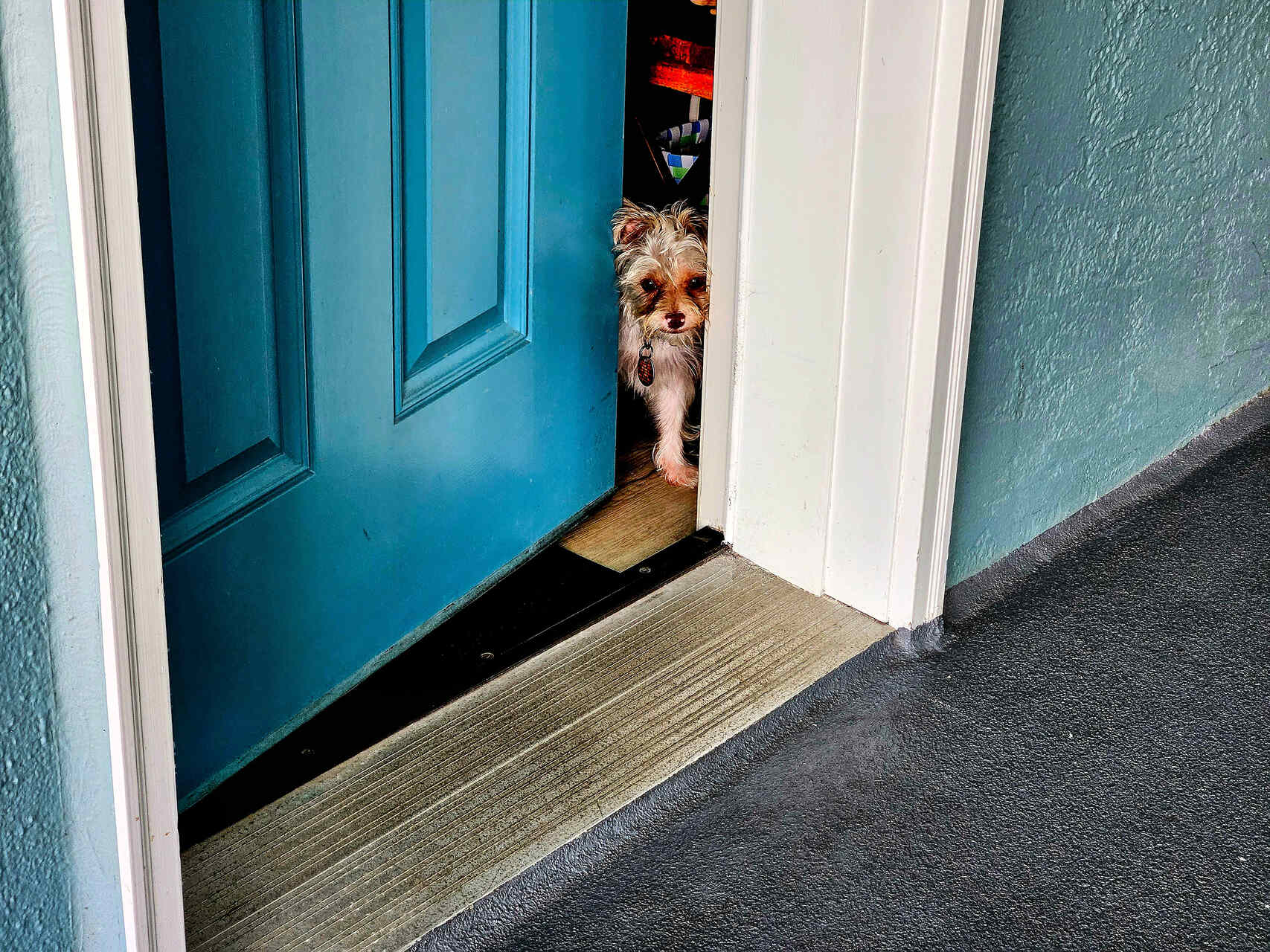
💡 So if you’re considering adopting a dog that’s considered one of the “smarter” breeds, make sure you’re refreshing basic obedience commands like “Come back”, “Drop it”, and “Sit” frequently.
Because in an emergency (like if they’ve bolted the leash), you’re that much more likely to keep them safe if they’ve learned that returning to you or dropping that mushroom from their mouth = pats and praise.
Besides, it’s also a good idea to mix up their training by teaching your buddy new tricks and commands every so often.
Why? Because when it comes to the smartest dog breeds, they pretty much need…
Constant physical & mental stimulation
If an idle mind is the devil’s workshop, it’s a mess of instincts and poor impulse control for your brainy buddy. Boredom can result in your dog getting anxious, stressed out – and destructive, if left to their own devices.
Which is why it’s a good idea to keep them occupied and engaged – both when you’re around and especially when you’re away. Because if you’ve got a dog that can figure out how to squeeze through any nook or cranny of your house to get some excitement outdoors…
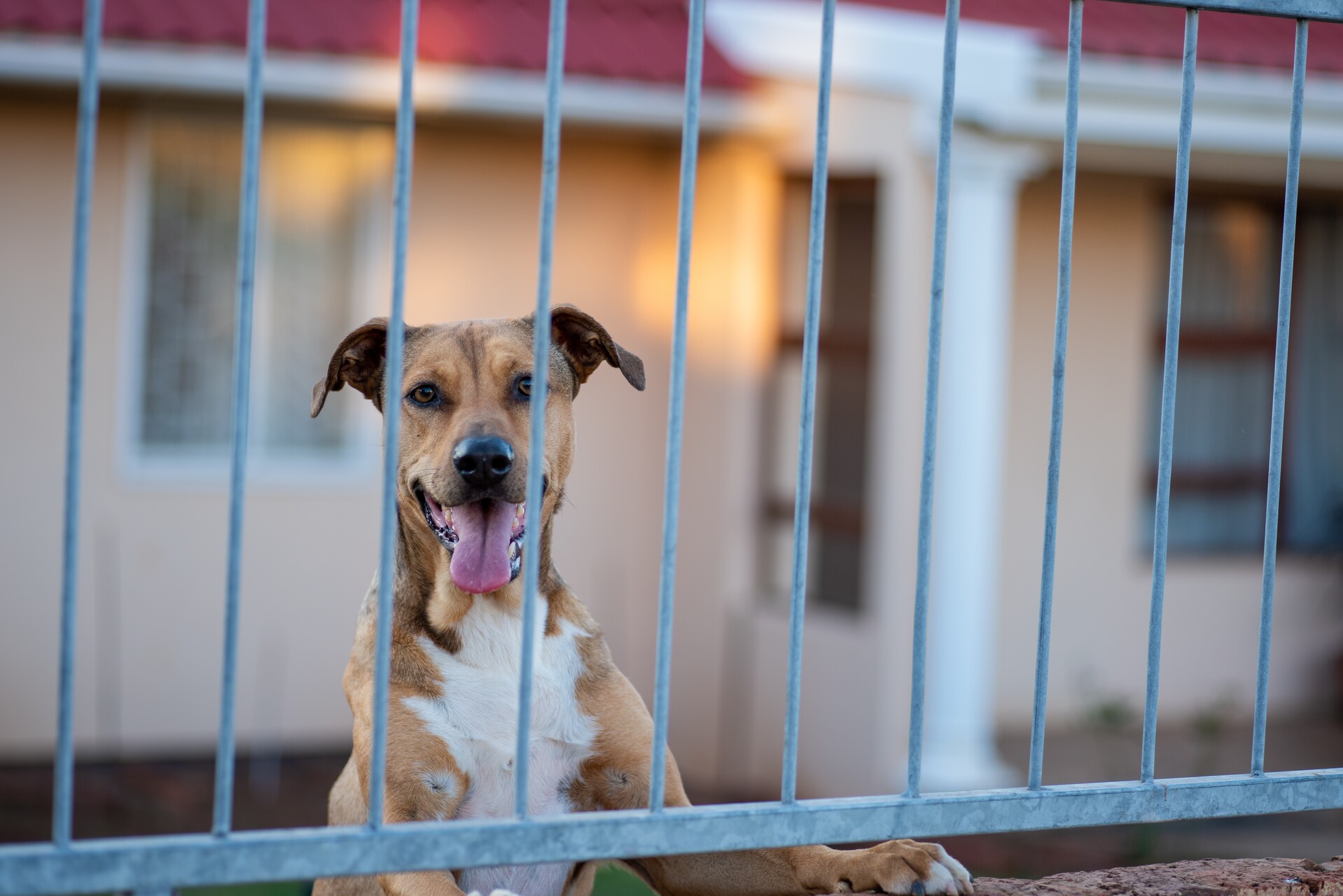
So when you’re around, make regular playtime a priority. Exercising your dog keeps both their bodies and brains active and healthy – whether that’s indoors or outdoors.
Besides, once you’re away, it’s a good idea to leave your dog an enriched environment to keep them busy. One that ideally includes:
- Interactive toys
- Food puzzles that make them have to “work” for their treats
- Something with your scent (like a blanket or a sweater) to help them feel reassured
Read more:
Ideally, you also aren’t leaving your buddy at home alone for longer than a few hours, tops. Because when it comes to the smartest dog breeds, they’re also likely to get bored more easily than others.
Which is why they also need…
Extra care they don’t run away
Besides chewed up slippers or a ruined IKEA masterpiece, boredom is also one of the key reasons why dogs run away from home.
So if you’ve got one of the smarter dog breeds waiting for you to return, it’s possible they might get up to some mischief to keep themselves occupied while you’re not around. (And where else to get some excitement than the big, beautiful world outdoors?)
Which is why it makes sense to:
- Keep your neighbors, friends, and family members informed (especially if you live alone.) They can keep an eye out for a runaway dog and let you know so you can intervene.
- Check in with your dog periodically throughout the day. Whether that’s with an indoor camera or if you can drop by home on your lunch break.
- Escape-proof your home and backyard with a sturdy fence, if it applies to your property. (Else securing your windows and balcony doors, if you live in an apartment.)
Read more: 15 Dog Fence Ideas For Your Escape Artist Buddy
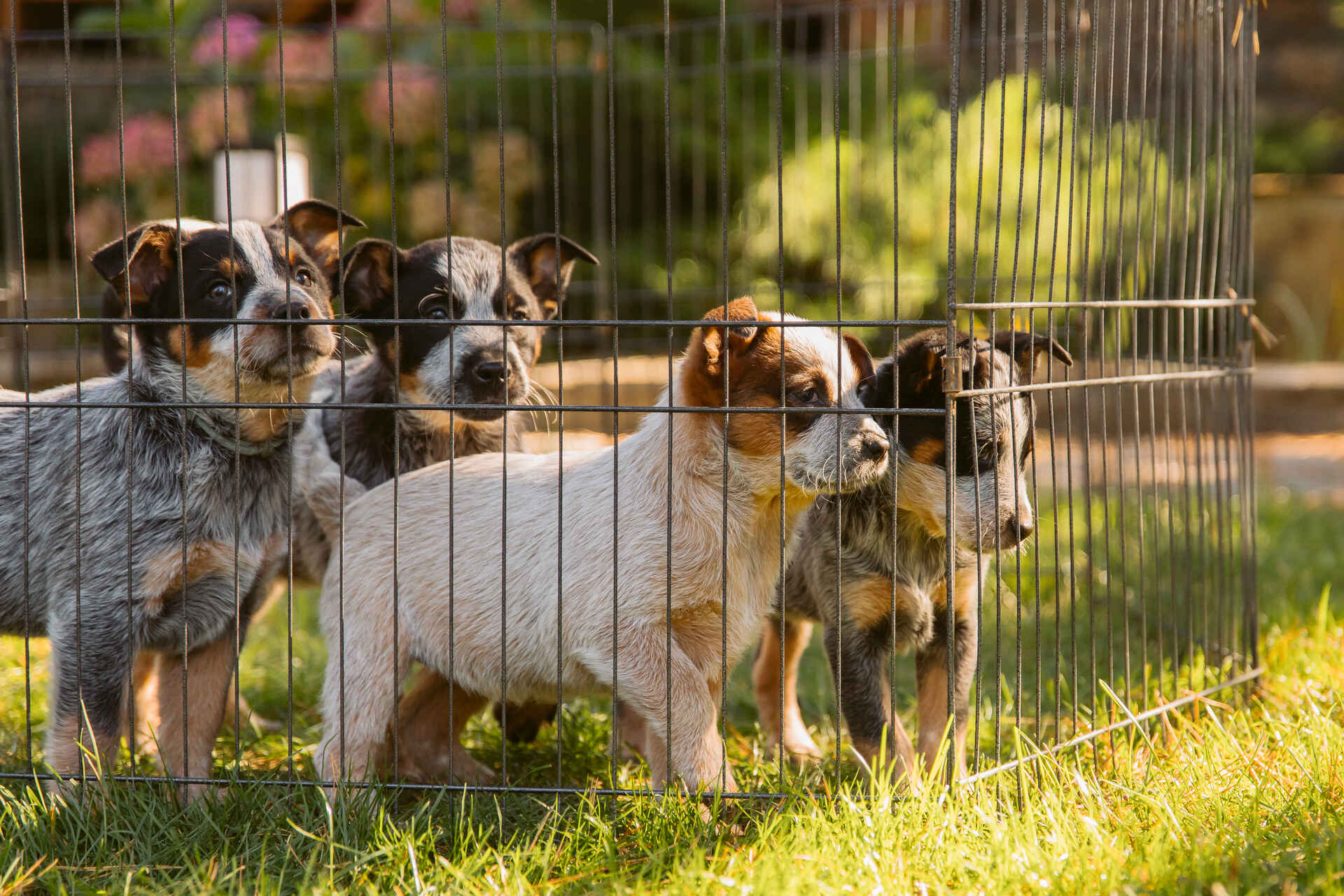
💡Living with an escape artist dog is also the key reason dog parents around the world – just like you – are strapping GPS trackers to their buddies’ collars.
Because when you’ve got a missing dog situation at hand, every second counts.
So imagine the relief and peace of mind from knowing you can follow your dog’s every step – as they make every step, in real-time?
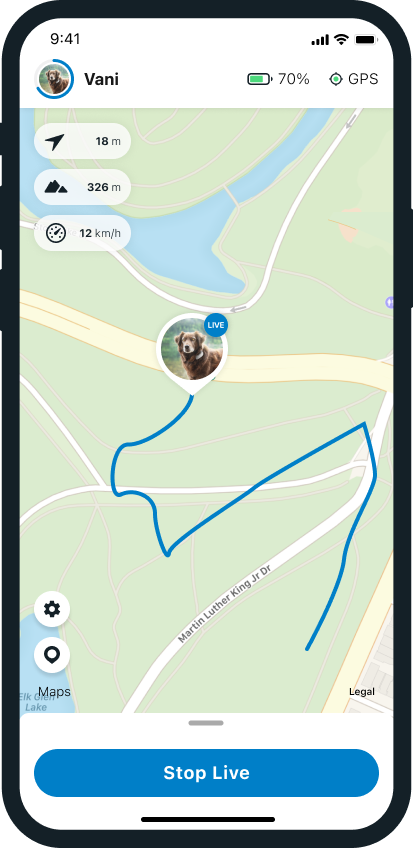
With your trusty Tractive device set up, you can now:
- Track your dog’s movements in real-time,
- Over an unlimited range,
- Across 175 countries (if you’re on a Premium subscription), so even while on vacation
- Escape-proof your home and backyard with a Virtual Fence, or a “safe zone” that sends you an escape alert if your dog tries sneaking past it
…all this on one device and with just a glance at your phone. Helping you take a more active role in your buddy’s safety and well-being.

So, ready to adopt a dog that’ll keep you on your toes and give you the match of wits you’ve been looking for? Here are 10 of the (slightly) lesser-known breeds than the popular choices.
10 of the (slightly lesser-known) smartest dog breeds
Just like humans, every dog has their own brand of “intelligence”. With the right environment and care, they can all learn to get creative, solve problems and puzzles, and exercise their brains to the fullest.
But for dogs, much like with most animals, “intelligence” is mostly equated to “obedience.” Which boils down to:
- How quickly they can pick up on new commands
- How responsive they are to training over time
So if you’re looking for a brainy four-legged buddy that isn’t a Border Collie, Lab, or Poodle, you could also consider a:
Doberman Pinscher
Ranked 5th on the Stanley Coren list of dog intelligence, Doberman Pinschers are a breed of sleek, athletic dogs originating from Germany. Funnily enough, they were actually named after Louis Dobermann, a tax collector, who originally bred them!
With their lightning quick reflexes and high trainability, Doberman Pinschers excel in police and military dog training – but also agility and obedience competitions. If you’re sporty yourself and love being on the move, a Doberman will be one of your best companions.
Read more: All About Working Dogs: Their Roles, Breeds & More
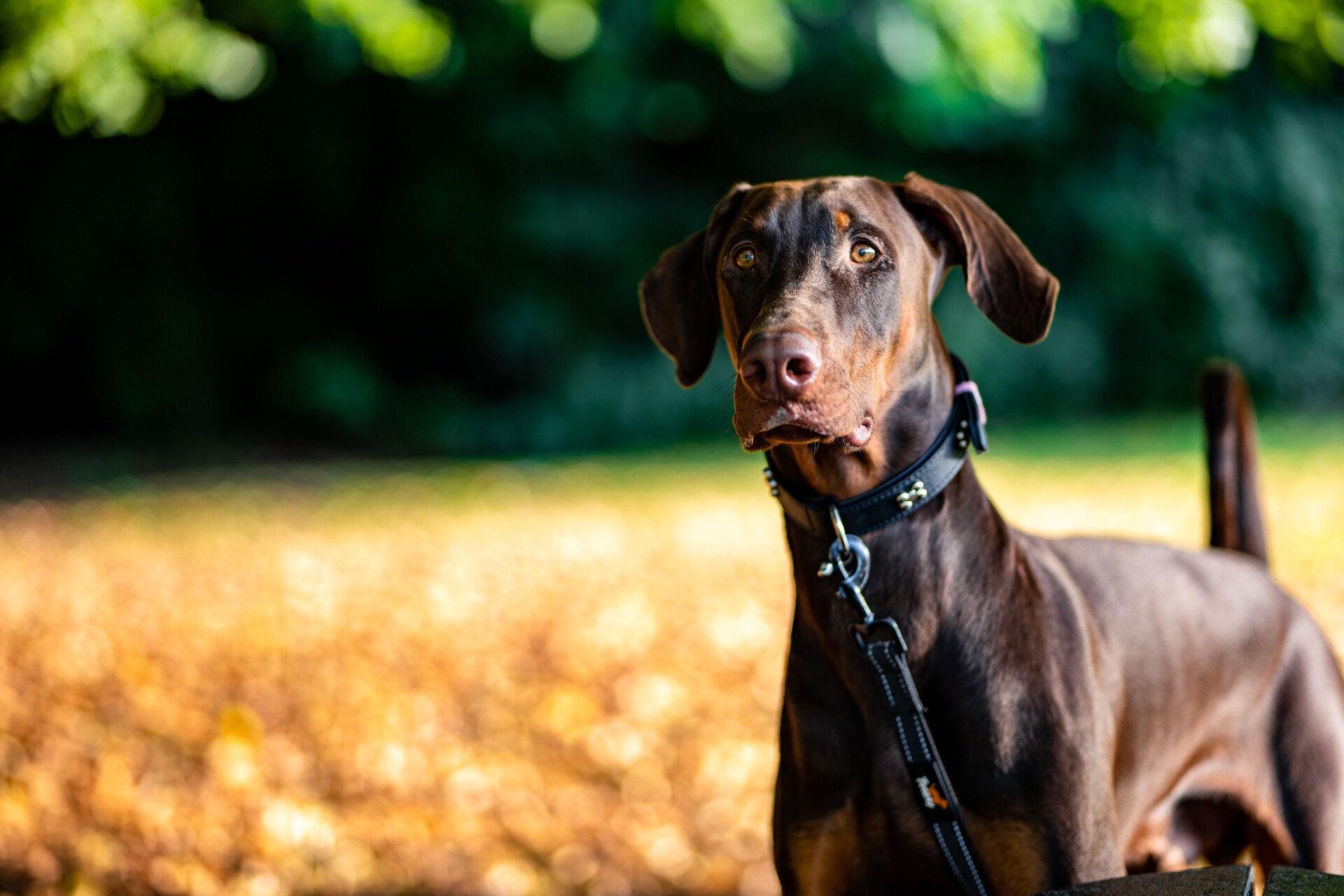
💡Contrary to stereotypes, Dobermans aren’t necessarily more aggressive than, well, any other dogs.1 But watch out – they do tend to be rather slow to warm up around strangers. (They were historically bred as guard dogs, after all.)
So make sure to socialize yours to learn how to behave around other pets and people from a young age. This can help your Dobie learn that it’s okay to relax and enjoy being a dog a bit – without having to leap to your defence every second.
Shetland Sheepdog
Also known as Shelties, the Shetland Sheepdog ranks just below the Doberman on the Coren list. These dogs are highly intelligent and trainable, excelling at problem solving on the go.
Shelties were originally bred as herding dogs, which means they’re quick to think on their feet and can adapt to harsh environments. They’re also one of the smartest dog breeds, able to understand new tricks and commands in fewer than 5 repetitions!
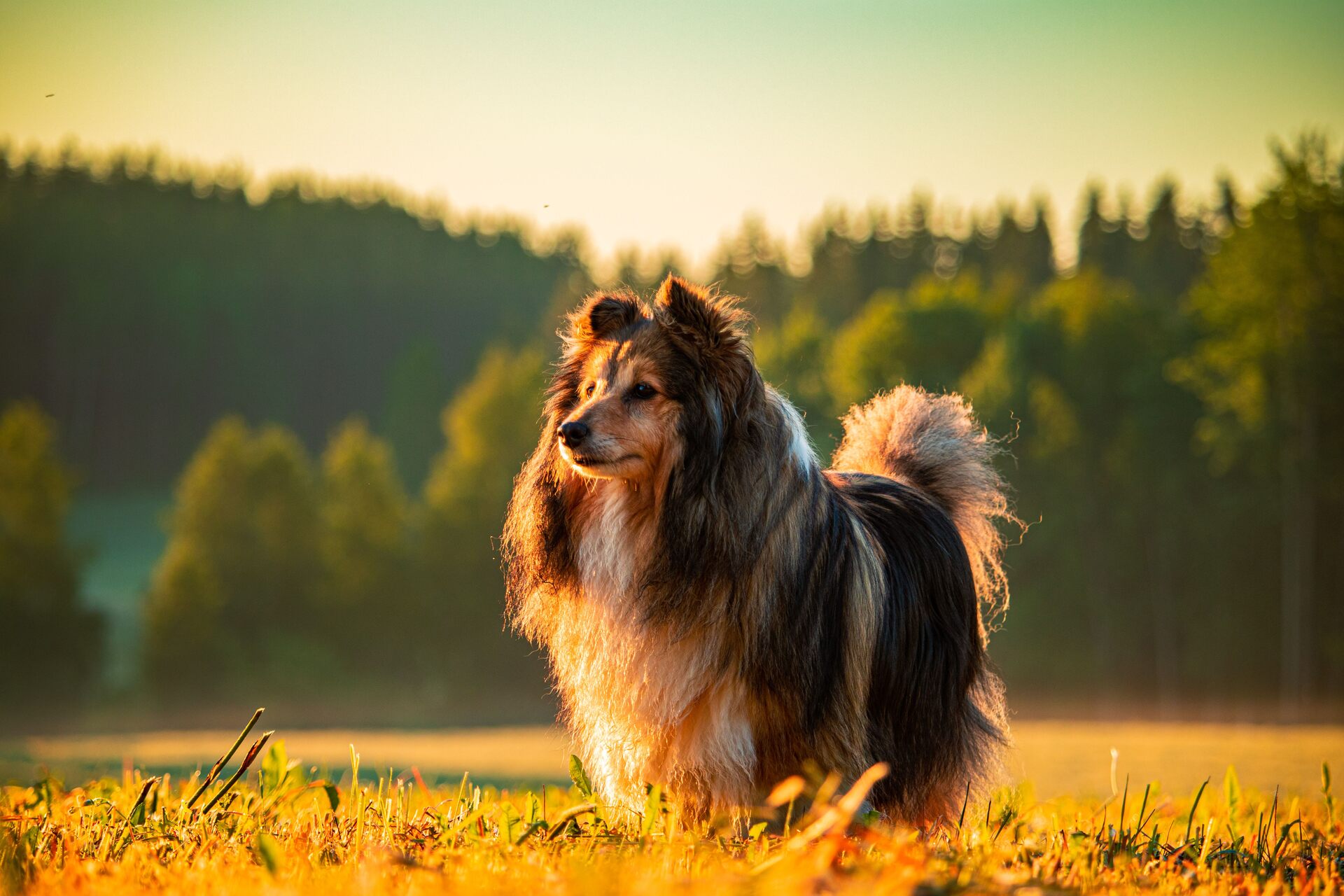
💡Like their name suggests, Shelties were bred to herd and boss around sheep in farms and open pastures. So if you’re raising one in a city, make sure they have a “job” to do. (Else they’re likely to get bored and antsy as a result.)
This could be putting away their toys, waking up your kids in the morning, opening and closing doors – your options are endless. With your Sheltie happy and busy throughout the day, you’ll be less likely to find them miles away searching for a herd of sheep to take care of.
Papillon
Papillons might look like little toys, but don’t judge them on cuteness alone! These friendly, adventurous little dogs rank 8th on the Coren list and can pick up new tricks at lightning speed. Papillons also make excellent family dogs that enjoy a ton of playtime. But watch out – they need a ton of mental stimulation to prevent them from getting bored easily.
Much like Dobermans, Papillons are highly athletic – making excellent competitors at dog shows and agility contests. So they’ll be great if you:
- Can take them on walks multiple times a day
- Like to run on the regular
- Have a wide, open space in your backyard or apartment complex where they can enjoy some off-leash time
Else, you can set up an indoor obstacle course in your apartment or keep them busy with these easy indoor games for dogs. (Perfect for a rainy day!)

Like we’ve covered, keeping your Papillon well-exercised is a great way to prevent any boredom or behavioral issues. But we all have those days when we’d just rather do nothing and curl up on the couch with Netflix instead, right?
So here are two great ways to stay motivated to your routine: setting activity goals and comparing how active your dog is to other, similar dogs around you.
💡Both of which you can do if you’ve invested in an Activity Tracker for dogs – to keep you both motivated to their exercise for the long run.
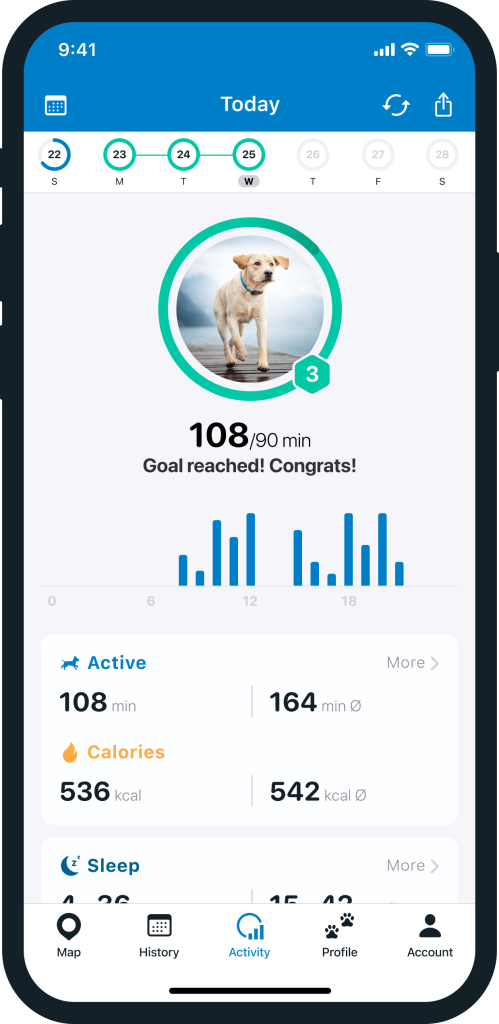
With its built-in motion detector, your trusty Tractive device logs in your dog’s active minutes throughout the day – from walks, playtime, exercise, and more.
Which, with time, can help you figure out:
- If your dog’s gotten enough exercise for the day
- Whether your dog’s hit their activity goals
- How your dog’s activity compares to that of other, similar dogs around you
All of which can help motivate you to stay more regular and take an active role towards your buddy’s health and well-being.
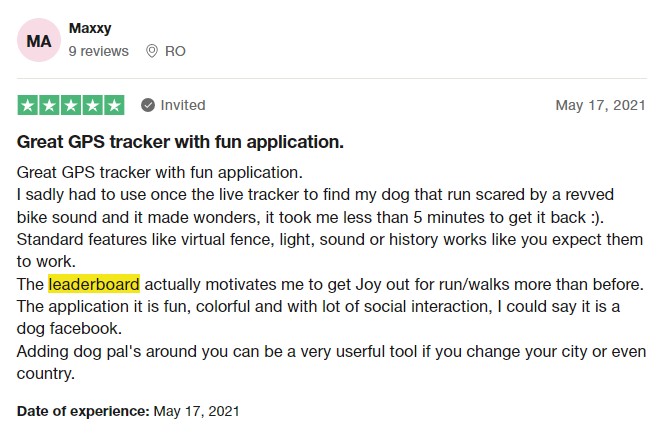
Miniature Schnauzer
Another laidback, obedient, friendly little dog is the Miniature Schnauzer, another small dog breed originating from Germany. Much like Shelties, they were bred to work on farms and chase down small, fast-moving pests like rats. Because of this, these little “grandpa dogs” are perceptive, quick to think on their feet, and love learning new skills and tricks!
Mini Schnauzers do tend to be a bit territorial, but they’re more likely to bark than bite. Much like Dobermans, they’re a bit slow to warm up around strangers – but they’re quick to grow friendly as well.
Besides, don’t be fooled by their shaggy coats – Mini Schnauzers don’t tend to shed much, so they’re as close to a hypoallergenic dog breed as possible. (Great if you have allergies!)
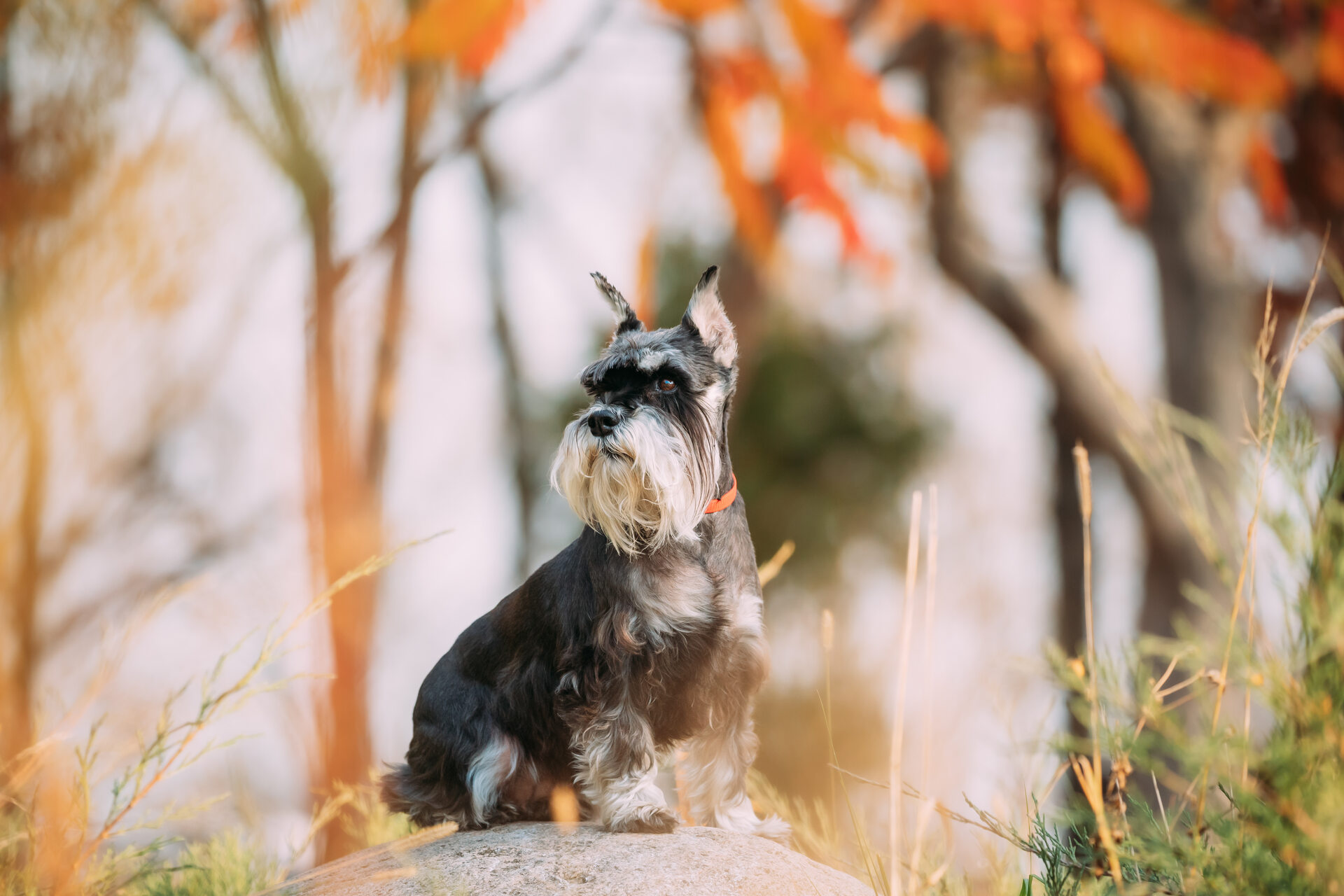
⚠️ Just watch out for your little Schnauzer’s prey drive – they have strong chasing and hunting instincts and may run after your kids, other dogs, woodland animals, cars, or even other joggers! All dogs have a prey drive to some extent or the other – and it’s also one of the key reasons they run away from home.
So make sure to keep your Mini Schnauzer firmly leashed by your side when you’re both out on walks together. Else, if they’re a bit of an escape artist, make sure they’re microchipped at the very least.
Read more:
Belgian Shepherd Dog (Tervueren)
You’ve heard of German Shepherds – but what about their Belgian cousins? From this family of Belgian Shepherds, the alert, sensitive Tervueren ranks 14th on the list of smartest dog breeds and can typically pick up tricks within 5-15 repetitions.
These shaggy, medium-sized dogs were once used to herd sheep in farms across Belgium. But they’ve since put their athleticism and trainability to use on the Belgian police and military forces – but also as guide dogs and search and rescue dogs.
Just watch out – Tervuerens have a tendency to “nip”, like they might a sheep on a farm. So if you’ve got kids at home, they might try “herding” them around like they would animals. (Though they’ll respond well if you train them consistently to be gentle.)
Read more: 10 Herding Dog Breeds That Just Can’t Sit Still!
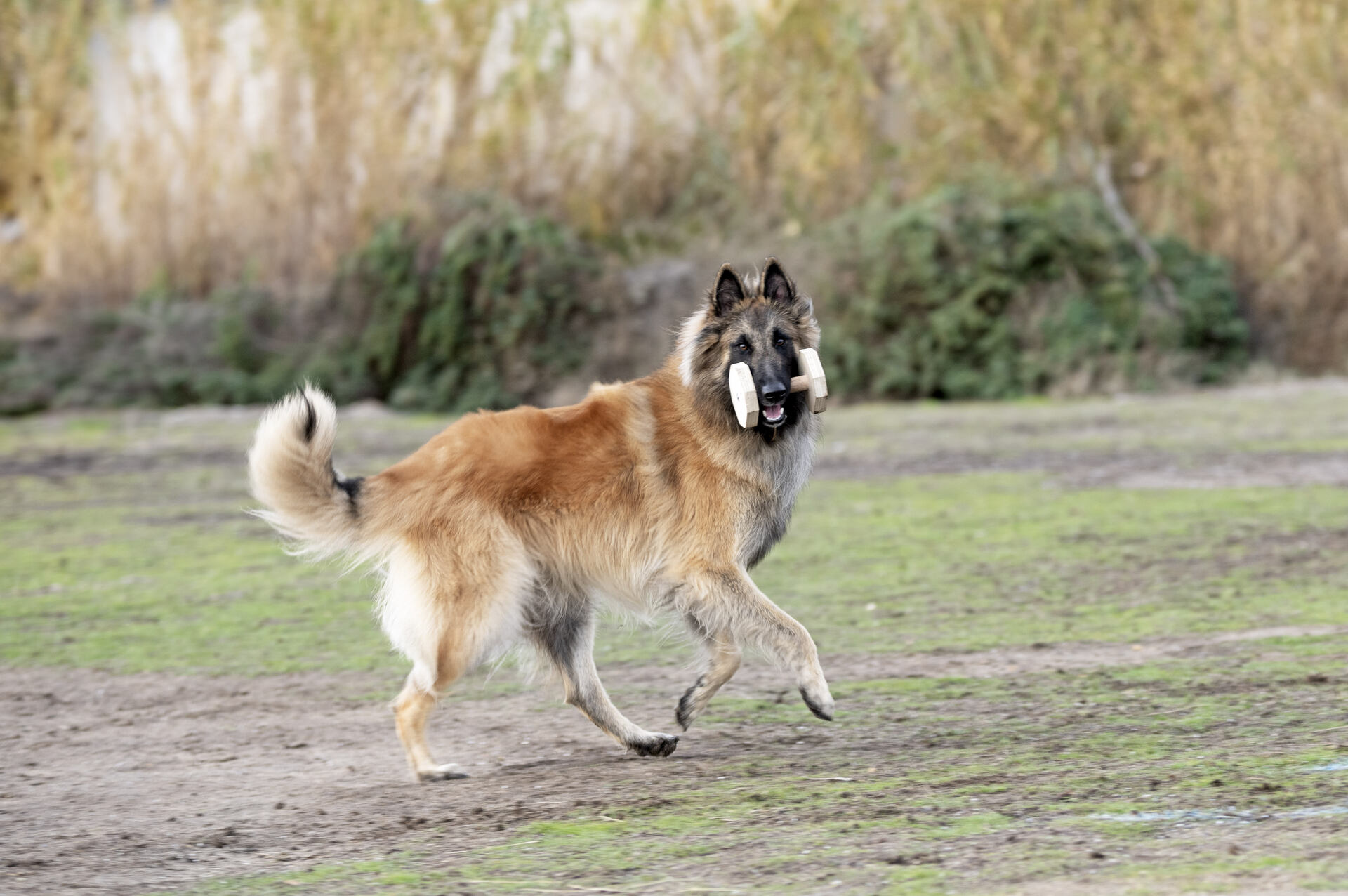
⚠️ Tervuerens make for excellent, sporty companion dogs and don’t do too well living indoors all the time. So make sure you’ve escape-proofed your home and backyard to prevent them from escaping to find some excitement outdoors!
But if you can’t set up a physical fence, why not try a virtual one instead?
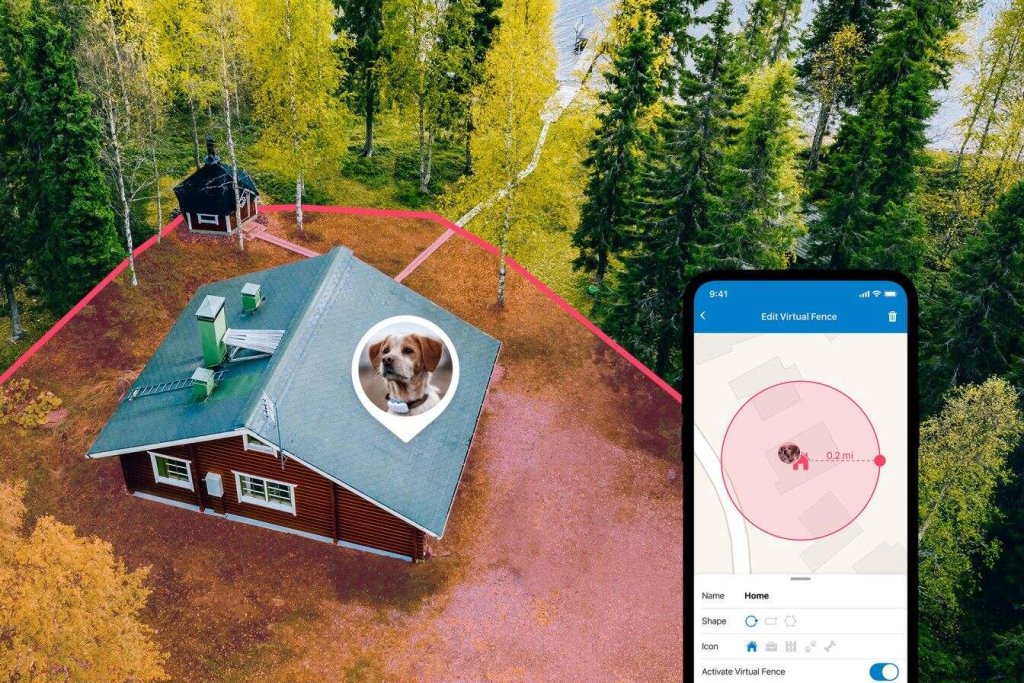
In under 5 minutes, you can set up a “safe zone” on your Tractive device – and get an escape alert if your dog tries sneaking past it.
So you can intervene and bring them back to safety in no time.
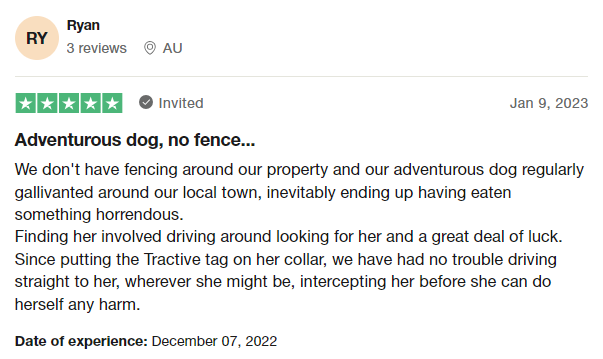
German Shorthaired Pointer
Next on our list of the smartest dog breeds is the German Shorthaired Pointer, another resourceful, fleet-footed former hunting dog that also excels at swimming.
These intelligent dogs can learn a whole bunch of advanced commands with consistent training. However, they do need early socialization, consistent training, and a “job” to stay occupied. (Else they have a tendency to get destructive out of boredom.)
Much like Tervuerens, German Shorthaired Pointers (or GPSs, for short) are a highly active breed. They’ll be your perfect companion for running, swimming, hiking, and camping in the great outdoors. You’ll also need to keep yours active at least twice a day to prevent them from getting up to any mischief.
Read more: Active Dogs: 10 High-Energy Dog Breeds For Outdoorsy Folks
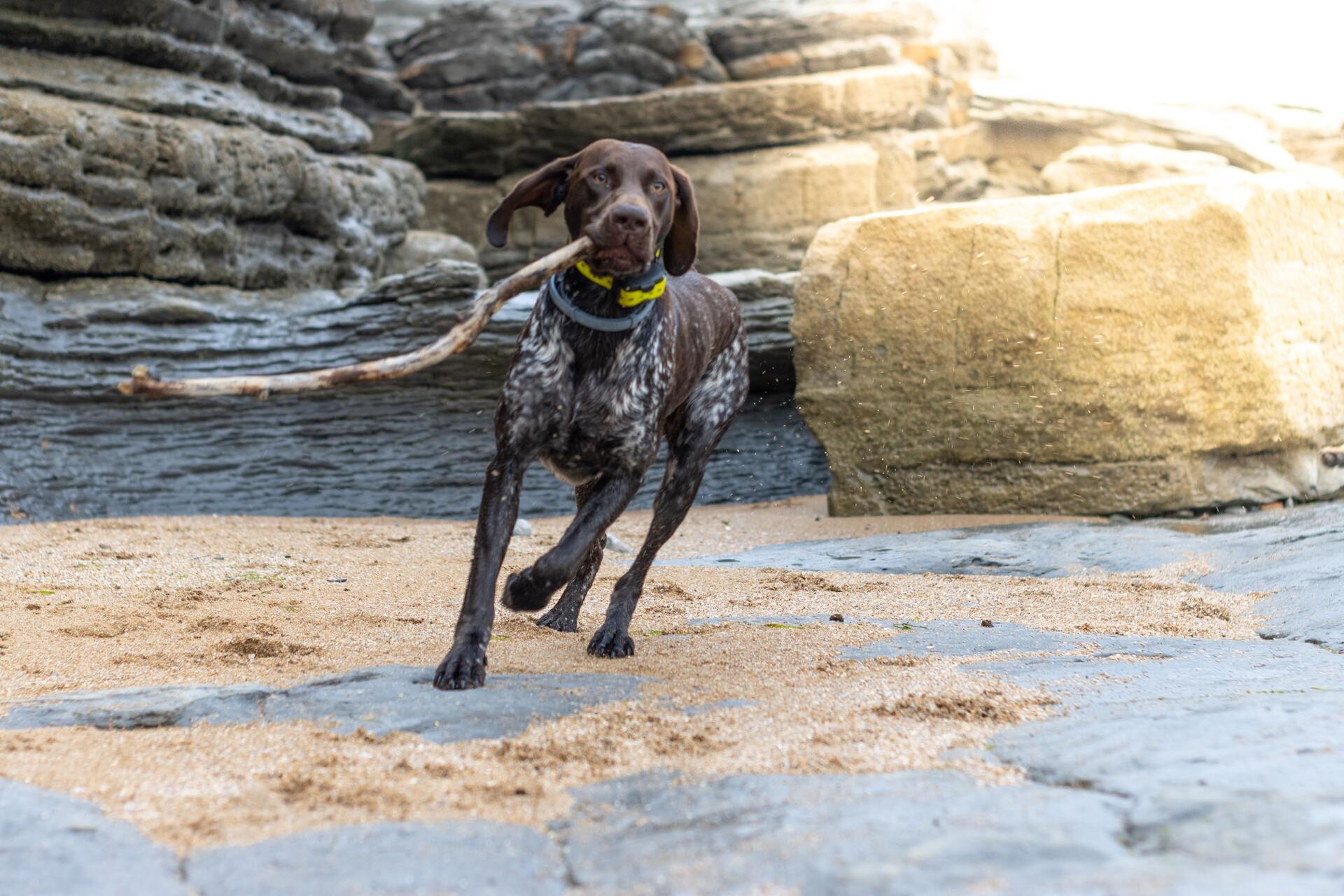
⚠️ Just like Schnauzers, German Shorthaired Pointers also have a strong prey drive. Plus, just a microchip may not be enough for a “lost dog” situation outdoors. (Especially in the woods or the wilderness.)
Rather, that’s where a dog GPS tracker can be a lifesaver instead – since you can use one to track your moving dog in real-time, plus over an unlimited range, all with just a glance at your phone.
Read more: Dog Tracker Chip: What Are Dog Microchips vs GPS Trackers?
English Springer Spaniel
A small dog breed originating from the UK, English Springer Spaniels are famous for being proficient “sleuthing” dogs. They’re excellent at sniffing out prey, but also weapons, explosives, and illegal substances when working on police and military units.
As former hunting dogs, Springers are often trained to pick up objects with a “soft mouth” (so as to not injure or puncture it) and to track down items based on scent. Based on the Coren scale, they’re likely to obey your first command around 85% of the time or better.
So if you’re considering adopting one, keep them busy with a “treat scavenger hunt” of sorts. Meaning, you could hide treats around your house and let your Springer sniff them out, one by one!
Read more: How Far Can Dogs Smell? Dog Sniffing Senses Explained
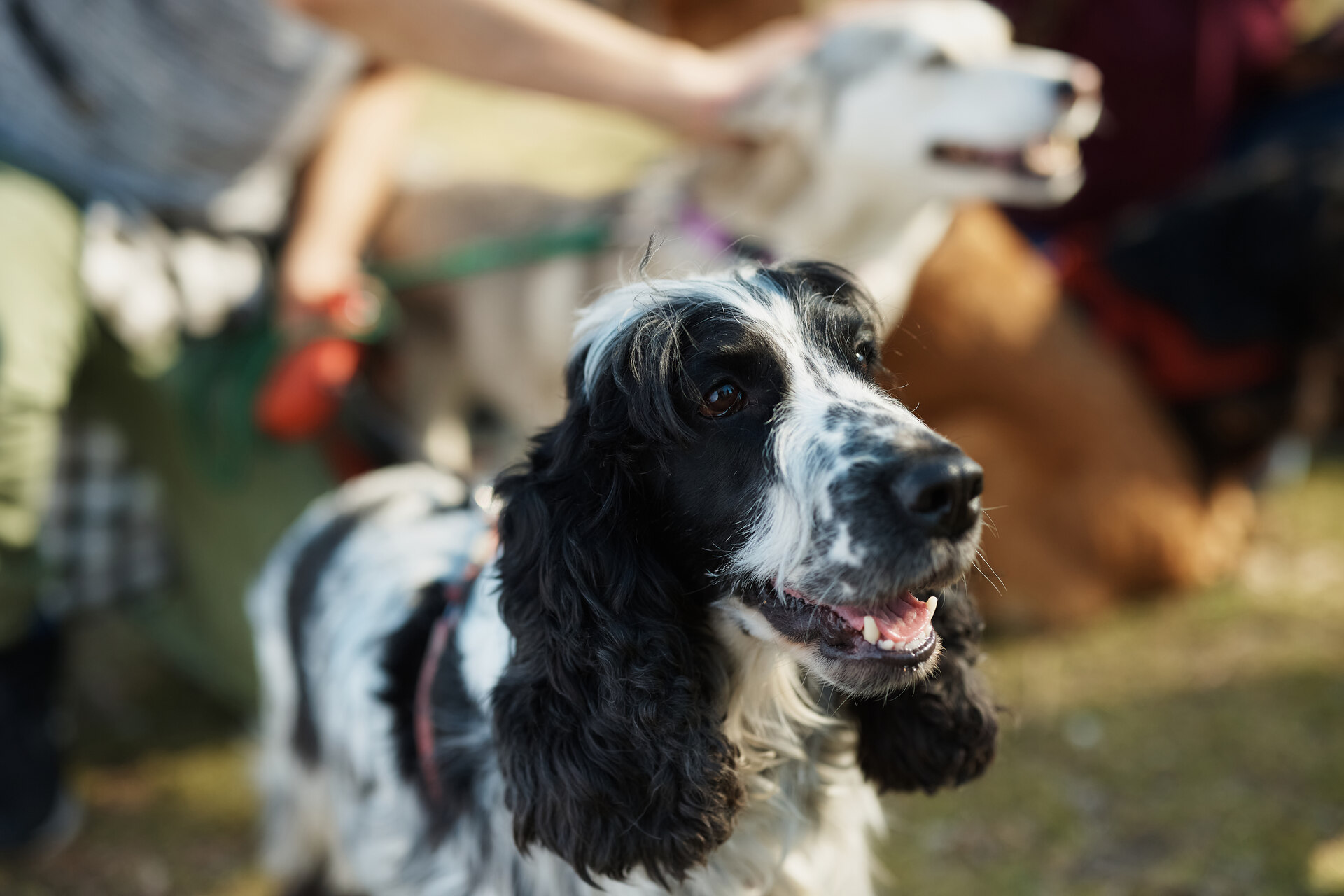
💡 Just be mindful you train your Springer to stay within “safe” limits. Their sense of smell and prey drive can motivate them to explore out of curiorsity. And in these situations, having a good recall (i.e., teaching your dog to come back when called) can be a lifesaver.
But in an emergency, like if they’ve bolted off into the woods after some sight, sound, or smell (or some smaller animal)…

Pomeranian
A small dog with a big personality, Pomeranians are a lively, inquisitive, energetic breed that can keep you on your toes all day long! Despite their independent streak, Poms perform quite well at obedience competitions and can be trained as alert, watchful guard dogs. (Though, much like you might’ve guessed looking at them, they do tend to be a bit “yappy.”)
Just be prepared to bring out the big guns vacuuming your house – Pomeranians shed quite a bit due to their thick double coats. (Especially around spring and fall when they graduate to their “new” coats.) You’ll need to groom yours regularly to keep their fur nice and smooth.
Read more: 5 Easy Dog Grooming Tips You Can Do At Home: The Ultimate Guide For Dog Parents
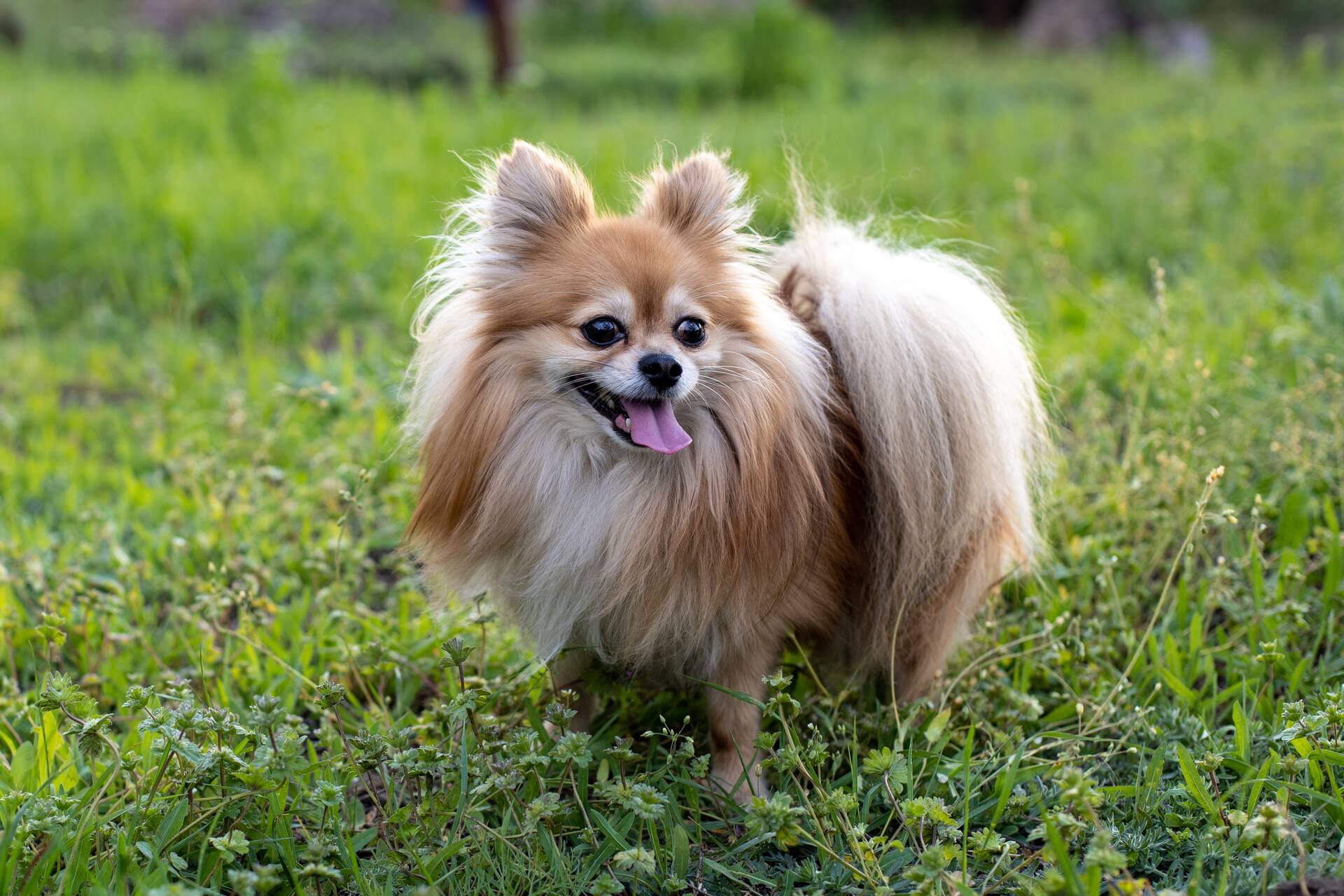
⚠️ Despite being highly active, Poms tend to be vulnerable to some joint and skeletal issues as they grow older.2 So make sure to train yours not to jump on and off couches and beds indoors, since there’s always a chance they might hurt themselves. (On account of their small size!)
Irish Water Spaniel
Another breed that reportedly doesn’t trigger allergies despite its thick coat are Irish Water Spaniels. Another intelligent, affectionate, energetic bunch, they make for excellent family dogs that are easy to train and motivated to behave. And much like their English cousins, they’re likely to obey you the first time around 85% of the time when you give them a command.
Like their name suggests, Irish Water Spaniels (or IWSs, for short) are excellent swimmers, historically trained to retrieve prey from water bodies. Because of this, they tend to be quite eager to please by temperament and will take well to consistent, positive reinforcement while training.
Just make sure to get yours used to grooming from a young age. Their thick coats need brushing at least twice weekly and a monthly trim to look neat and well-maintained. (And yes, you wouldn’t be the first to mistake one for a Poodle!)
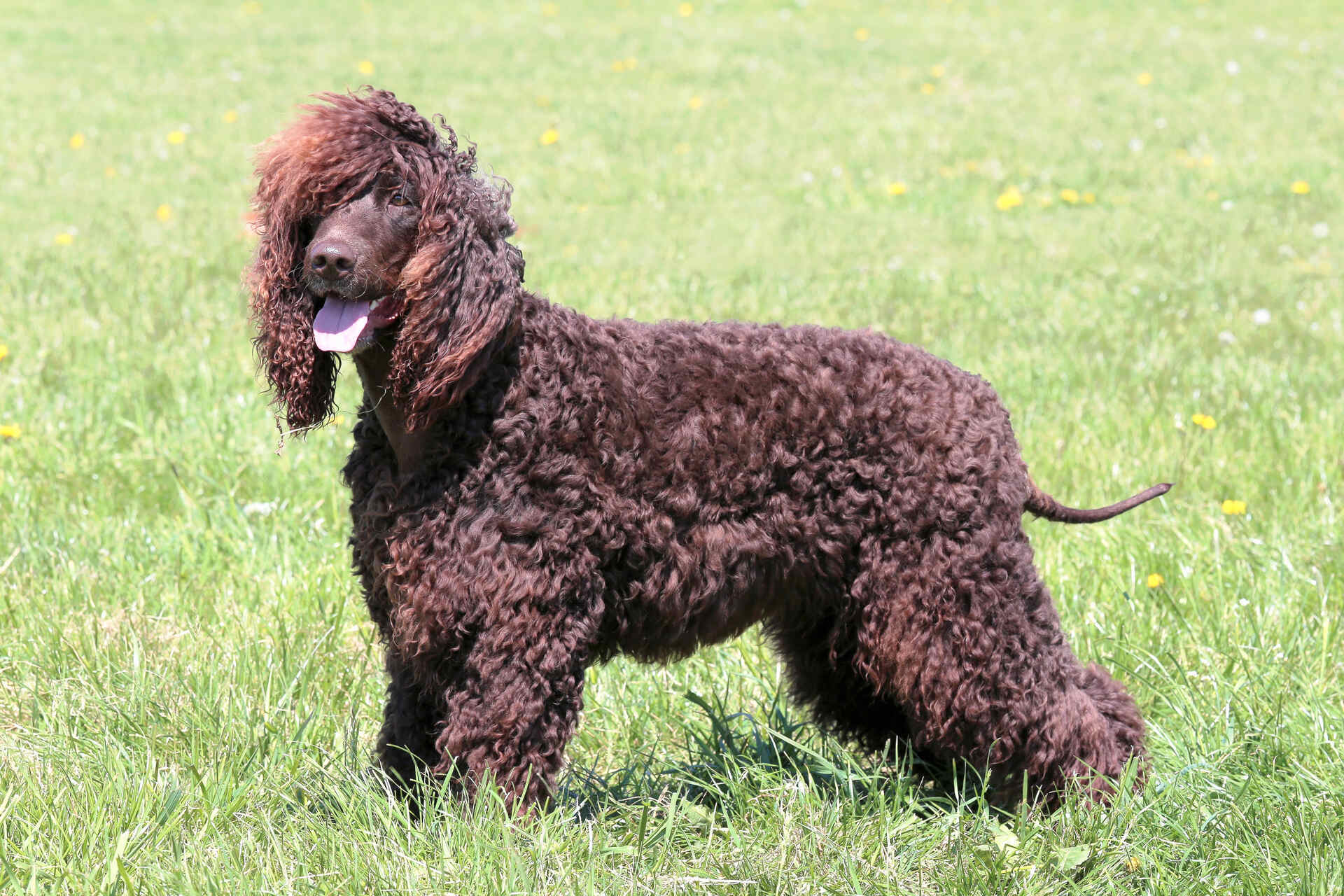
⚠️ Much like Pomeranians, Irish Water Spaniels also tend to develop mobility-affecting conditions in later life, including hip dysplasia and hypothyroidism.3 Both of which can lead to yours not getting as much movement as they should.
But if you’ve invested in a Tractive device, your tracker will send you a Health Alert if it detects your buddy hasn’t been getting as many active minutes as usual.
So you can get them to a vet right away for a checkup – before their health worsens. (And now you’re stuck with a more expensive medical bill you could’ve avoided instead.)


“It can be easy to miss out on changes in your dog’s or cat’s regular activity – or just if they’re on the move more or less than usual.
So we’ve set up Activity Degradation alerts for when your pet’s active minutes drop significantly.
They can help you intervene in a situation where your pet might be struggling with an infection or even just pain.”
– Sebastian Raab, Product Manager at Tractive & occasional pet-sitter

Cardigan Welsh Corgi
You’re probably familiar with the Pembroke Welsh Corgi that doesn’t have a tail – but turns out, their cousins do! Cardigan Welsh Corgis are one of the oldest breeds of dogs from the UK. Plus, don’t be fooled by their small size and short legs: these little dogs are deceptively fast, whether that’s chasing around herd animals on farms – but also in flyball, obedience, and agility contests.
Cardis are known to be highly loyal, alert, and trainable – able to think on their feet and guard homes with a surprisingly deep bark. Some experts even refer to them as “Alsatians on short legs!” They do best in active families that like to be on the move and make for highly affectionate dogs.
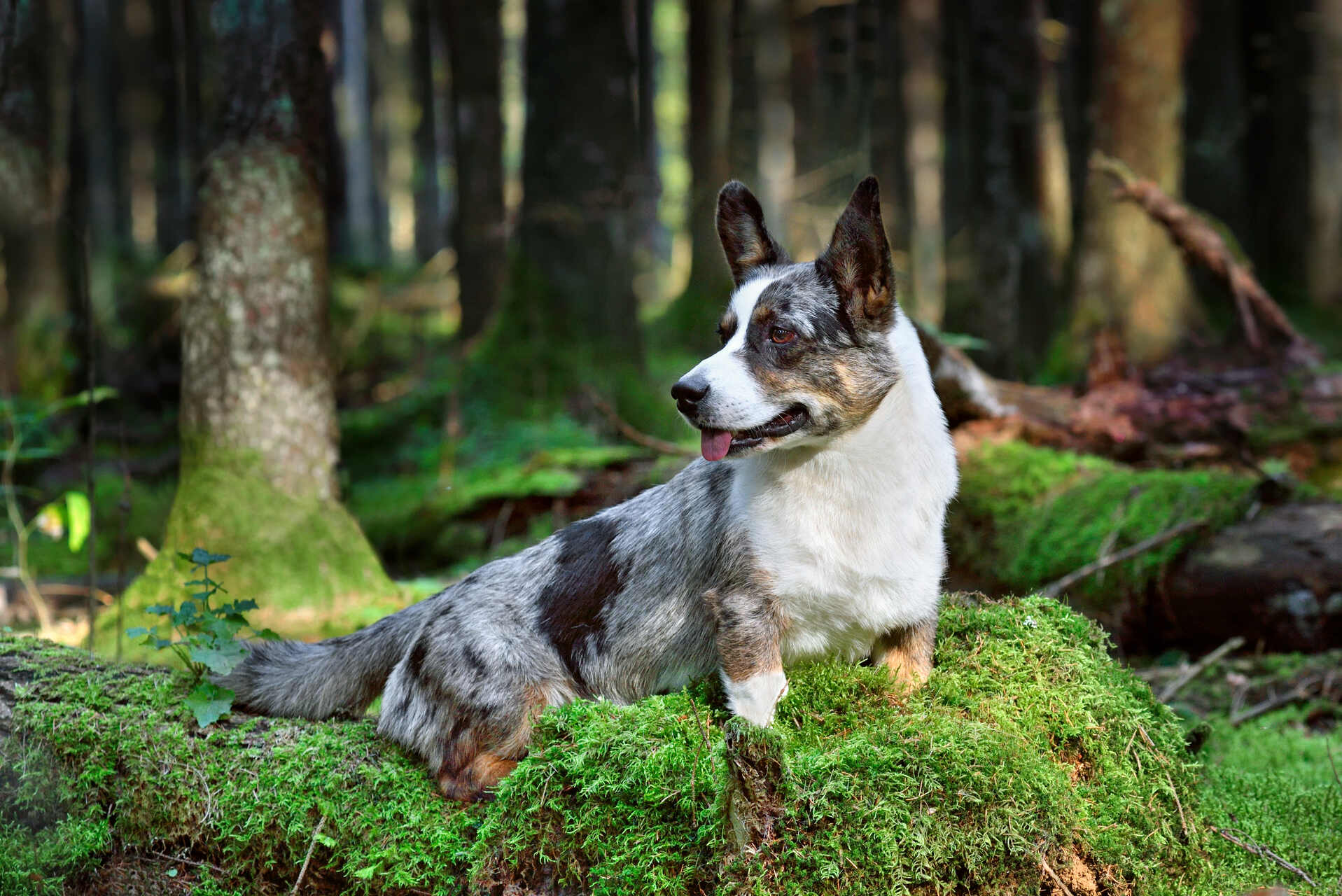
⚠️Much like Pomeranians, Cardis tend to be on the smaller size – so you’re best off supervising them indoors. (Especially when couches, beds, and staircases are involved, so they don’t misjudge any heights and injure themselves.) They also tend to be vulnerable to spinal issues in their older years.
Looking for a brainy buddy to match wits & walks alike?
Besides more “popular” breeds like Border Collies, Labs, and Poodles, these (slightly) lesser-known dogs also count among the smartest dog breeds around the world. Especially if you’re looking for:
- Athletic, fleet-footed dogs like Doberman Pinschers, German Shorthaired Pointers, and Tervuerens
- Smart dogs on the smaller side, like Papillons, Pomeranians, and Cardigan Welsh Corgis
- Dogs that would love nothing more than to help you with chores around your house, like Shelties and English Springer Spaniels.
- Hypoallergenic dogs, like Irish Water Spaniels and Miniature Schnauzers.
Now of course, we’d always recommend training, regular exercise, and planning ahead for an emergency for all dogs. But when it comes to the smartest dog breeds, not investing in these spells trouble. Especially if you aren’t prepared to handle their creativity, resourcefulness, and endless ways of getting themselves up to no good!
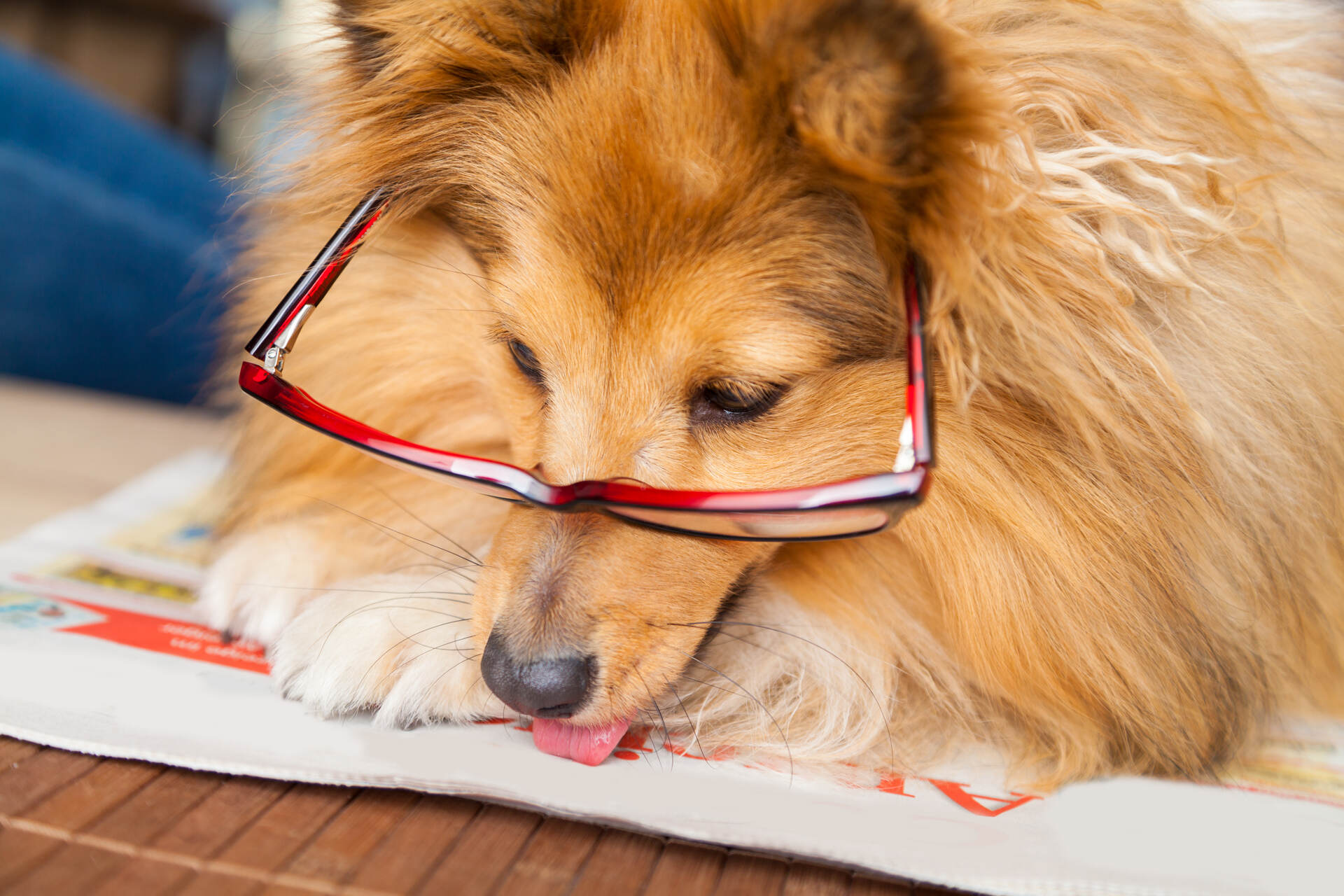
💡So if you’re looking to get your dog enough exercise as well as follow their every step, the Tractive GPS may just be the solution you’re looking for – all in one device, made with love for dogs and for your peace of mind as a dog parent.

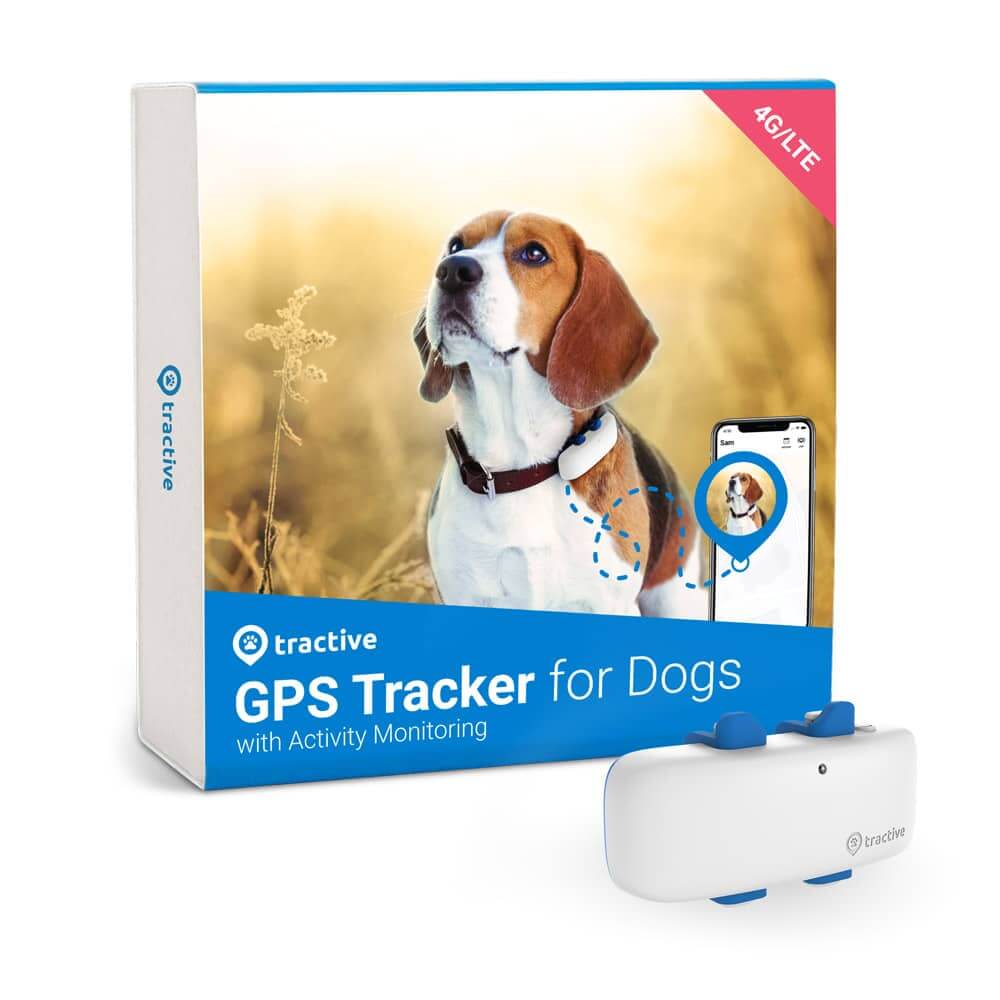
Always know where your dog is
Follow every step in real-time with unlimited range. Get alerts if they wander too far. Keep them happy & healthy with Wellness Monitoring. And let others – like walkers or sitters – keep an eye on your dog too.
Curious what the experts think? Here’s the American Kennel Club’s take on the world’s smartest dog breeds:
And if you’ve liked this post, share it with a friend or a loved one – and let’s help build a safer, kinder world for our furry friends together.




